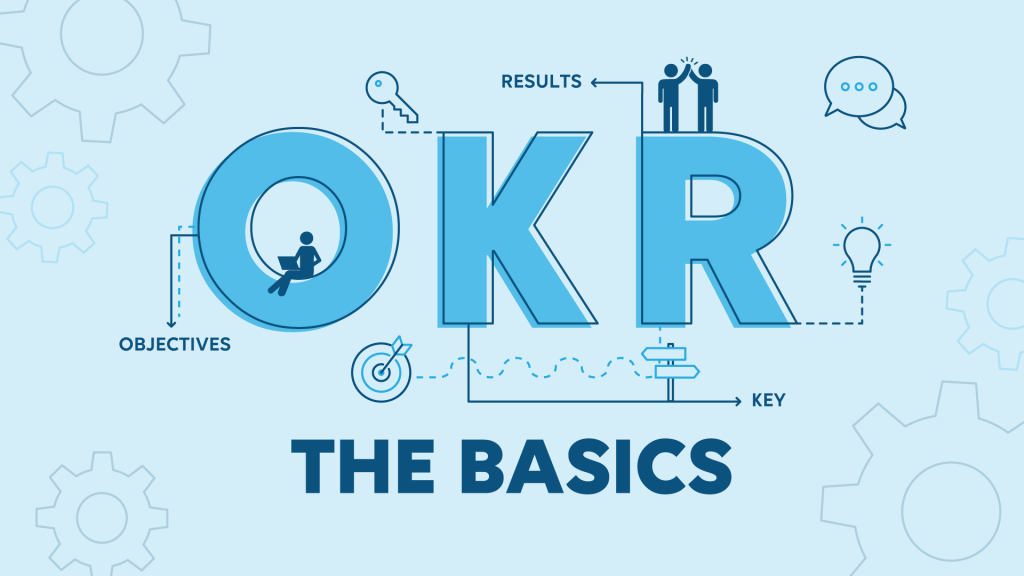If you’ve read our previous blog post on the basics of OKRs, you already know what OKRs are and how you can create them. But WHY should you implement them?
In this post, we’ll reflect on what OKRs could bring to a company, a team, and you as an individual. Let’s talk F.A.C.T.S.!
F: Focus
Focus is one of the main pillars of the OKR framework, which is, after all, a goal-setting framework.
To guarantee the highest level of focus, the framework recommends focusing only on a select number (3-5) of Key Objectives and fully delivering on those across the organization before moving on to the next challenge. In that way, you can drastically increase the chances of reaching the desired outcomes.
Besides, this idea of prioritization of work is also important in order to push teams and individuals to define and embrace constraints, and really feel connected to the goals they’re trying to achieve.
A: Alignment
Alignment is the big brother of focus. While focus is the necessary first step toward reaching your goals, alignment is the necessary step toward fostering a community of teamwork, collaboration, and understanding, which is just as important.
Alignment is about creating a shared understanding of all the OKRs within the company and finding out how different teams can collaborate toward achieving related goals. This makes honest and transparent communication a prerequisite for attaining alignment.
Getting team members on the same page is one thing. But one of the key challenges in a larger distributed organization is to align activities across different individuals, squads, and chapters to ensure the delivery of value. By using shared OKRs, you can greatly improve collaboration among different teams, which helps solve interdependencies and increase visibility on similar ideas or objectives.
C: Commitment
Within the OKR framework, teams are fully responsible for the success of their own objectives. Although they are provided with a clear direction, they are free—to a certain extent—to choose how they will achieve their OKRs. They are accountable for making the best possible choices, which is vital to ensure their full commitment and engagement.
What’s more, since all employees have a complete overview of all OKRs within the company and since they know that the progress of their OKRs is continuously and accurately measured through Key Results, there’s also a corporate sense of commitment, trust, and engagement.
T: Tracking
A Key Objective always consists of a limited number of Key Results that concretely and unequivocally define the measurable outcomes determining their success condition. In this way, it is possible to measure the impact of a team, understand what efforts are at risk, and use this information to facilitate the process of continuous improvement and learning.
Not only is it important to correctly create measurable Key Results, but also to share them publicly with the entire organization, ideally in a tool that could allow for creating, measuring, updating, and sharing feedback about them. This helps teams in their progress of becoming more transparent and impactful, which in turn will lead to more meaningful discussions about the goals that need to be achieved.
Such transparent communication also helps in creating more healthy work relationships and nurturing trust in teams, which in turn also leads to employees who will feel more appreciated and motivated.
S: Stretching
Finally, OKRs also motivate teams and individuals to excel, think outside the box, and strive further to find creative and innovative solutions. And this comes to full fruition in the so-called “moonshots” or aspirational OKRs.
Moonshots challenge teams to deliver an effort beyond the ordinary, beyond what seems possible. Since moonshots are expected to be virtually unattainable, they are considered successful when hitting the 60-70% completion mark.
Moonshots are perfect for pursuing transformation and innovation, but they need to be countered by more conservative OKRs with clear and perfectly attainable objectives that create business value in the short term. These OKRs are called committed OKRs or “roofshots”.
It should be noted that the key ingredient for this transition from ordinary to extraordinary work is empowerment, as mentioned above. Teams should be able to decide which plans are more likely to deliver on the desired outcomes and can try different approaches and tactics until the Key Results are achieved.
Discover the complete blog series on OKRs

BLOG | OKRs
PART 1 – Introduction to the basic concepts
Let’s deep dive into the basics of OKRs: what they are and how you can implement them.

BLOG | OKRs
PART 3 – OKR cycle – plan, evaluate, adapt, repeat
Learn how to correctly implement the 4 phases of the OKR cycle